The Québec maritime Blog
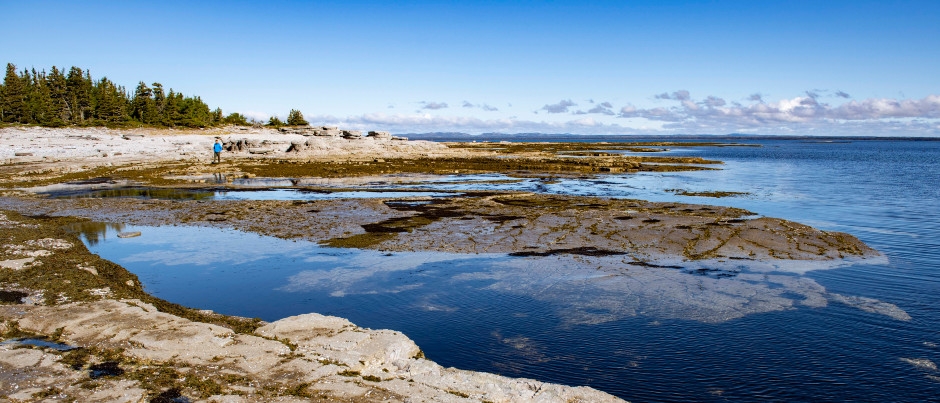
-
Mingan Archipelago National Park Reserve
Sébastien St-Jean/Tourisme Côte-Nord
Soak up the Exotic Charm of Havre-Saint-Pierre
Follow the Guide!
In the mid-1960s, when I wasn’t yet 10, my older brother brought home his new flame, and we all instantly fell in love with her. She was a tall blonde, so I thought she must be a Viking! What made her especially stand out was her accent, which was very different from ours. It made me laugh! Everything she told us about her native Minganie, in Côte-Nord, made the place seem terribly exotic!
She talked about digging for razor clams in the sand and picking cloudberries in the marshes and told us about black spruce forests where there are no maple trees. “At home, fall colours are found on the ground, in the mosses and lichens,” she explained. There were no apple trees there either, apparently! Apples were transported by boat or plane from outside the region. “But why by boat or plane?” we asked. “Do you live on an island?” She laughed: “Nope!” I learned there were no roads where she came from. “Maybe one day,” she said.
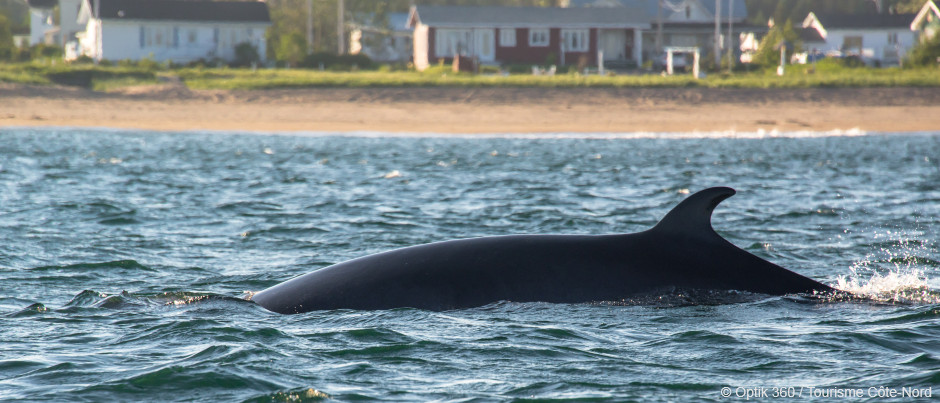
But her eyes lit up the most when she told us about the seashore back home, which was visited by great whales swimming around dozens of islands that are home to giant “flowerpots.” She even mentioned one inhabited by “sea parrots”!
She laughed at our big, bewildered eyes. Secretly, I concluded that my older brother’s girlfriend must be from another planet…!
Great northern territories
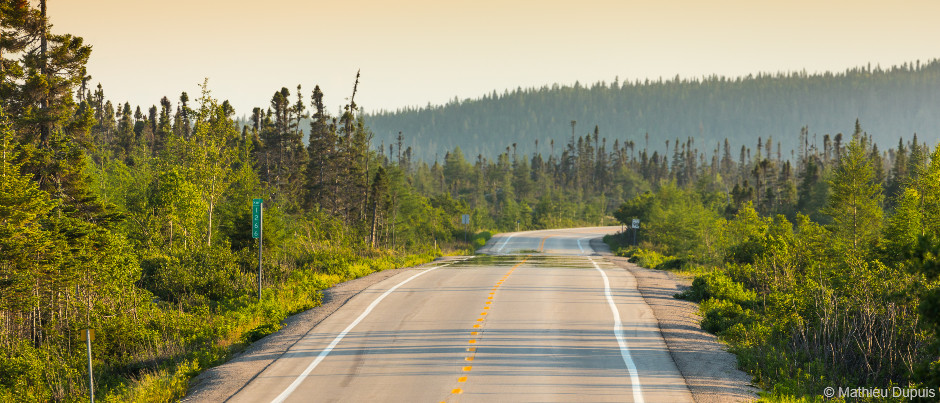
Later, I saw for myself this extraordinary place she had described so well to us. Certainly, the north shore of the St. Lawrence offers landscapes that are quite different from those found along the coast of my native Gaspésie—I felt transported to the border between reality and imagination. The taiga by the sea! It was a complete change of scenery.
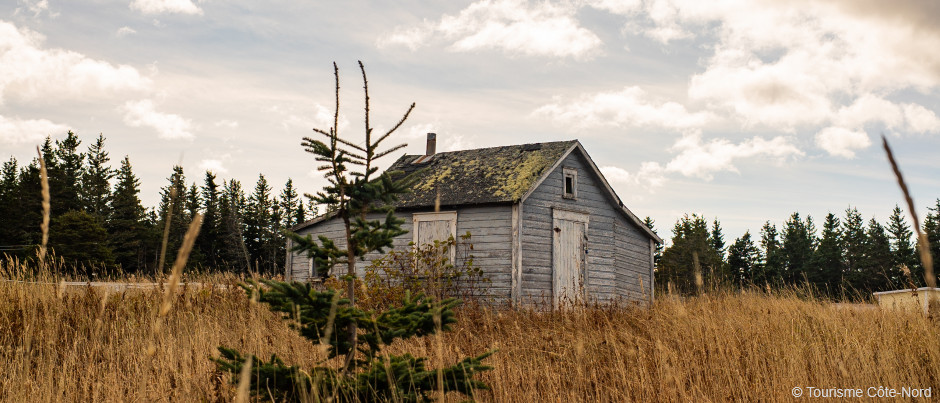
The backcountry sits on the bedrock of the Canadian Shield, an acidic granitic rocky base that’s responsible for the very specific vegetation found in this part of Côte-Nord. And much of the mysterious beauty of the local forest comes from the dominance of black spruce, a species endemic to North America. I’m convinced that these sparse and often stunted trees are probably the favourite of witches and that, on the other side of this forest, you’ll find the arctic tundra… At least that’s what the presence of large peat bogs, known as marshes to the locals, suggests.
The wow effect of the Mingan Archipelago!
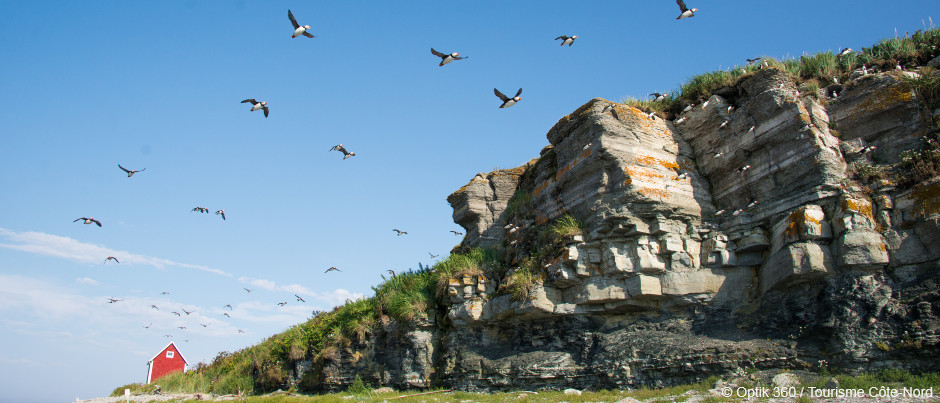
On top of the bedrock, the region benefits from a wide band of sedimentary deposits with kilometres of fine-sand beaches and a most spectacular geological formation: the Mingan Archipelago. Several hundred islands, limestone islets, rocks, a rocky shoreline and reefs line the coast for nearly 100 km (60 mi.). Home to the largest concentration of erosion monoliths in Canada, the archipelago is also an immense sanctuary for over 200 species of birds, including the funny-looking and iconic Atlantic puffins (those famous “sea parrots” she told us about!).
Add to all this stunning scenery leaping whales as well as seals resting on the cayes (the local term for the rocky foreshore) and you have all the elements required for an enchanting tale, to be spun at night in a tent…
A fisherman poet and his flowerpots
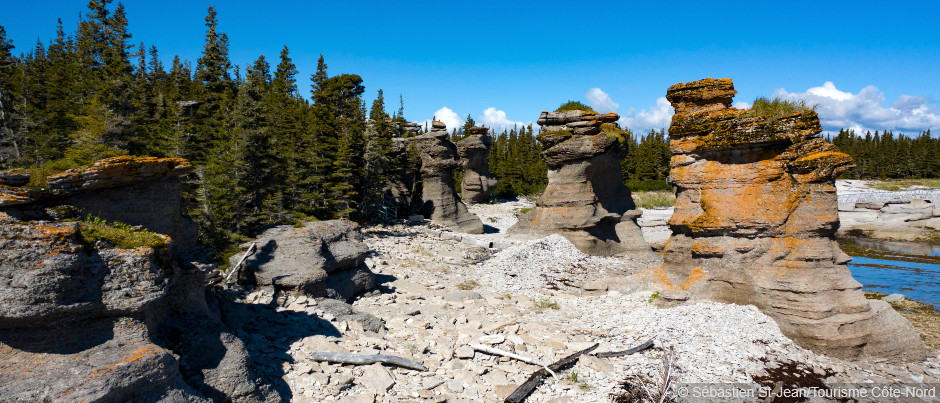
Roland Jomphe, who died in 2003 at the age of 86, was the son of a fisherman and a fisherman himself in his youth. Moved by the beauty of the islands in the archipelago, he quite naturally became their poet.
When the titanium mine opened in Havre-Saint-Pierre in 1948, he saw many fishermen abandon their trade to become miners. Since they were the ones who knew the archipelago the best, Roland feared that if they abandoned the islands, everything was over. So he began taking photos, telling stories and writing poems to preserve the beauty and way of life of his village. He was the one who named the local limestone monoliths “flowerpots” (since vegetation grows on them).
In the Minganie area, Roland Jomphe is considered to have greatly contributed to the recognition and preservation of the archipelago by the authorities. In 1984, the Mingan Archipelago National Park Reserve was created, the third largest Canadian national park in Québec. The unique maritime heritage of this area became a vast research laboratory accessible to all and paved the way for the local tourism industry.
Acadians and the sea…
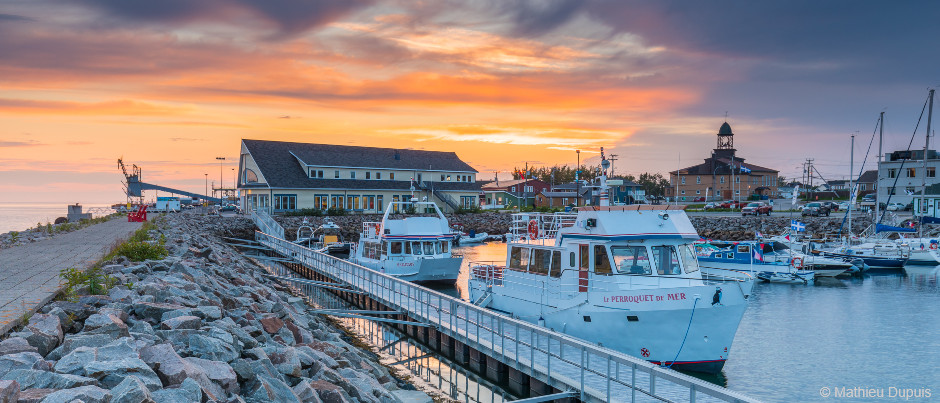
Acadians know the sea well. The sea is what brought them to this continent from France and they were deported by sea by the British troops in 1755. For many years thereafter, they travelled by land and sea to return as close as possible to their original French-speaking lands. Thus, Havre-Saint-Pierre was founded by Acadians from the Îles de la Madeleine. They call themselves Cayens (a common variation of the word Acadien, or Acadian).
What distinguishes the Cayens? Their unique singsong accent, for one! And then there’s their attachment to the sea, which has nourished generations and inspires their music and songs. When the Cayens bring out their violins, you can be sure you’ll be up till the wee hours!
A peaceful vacation in nature
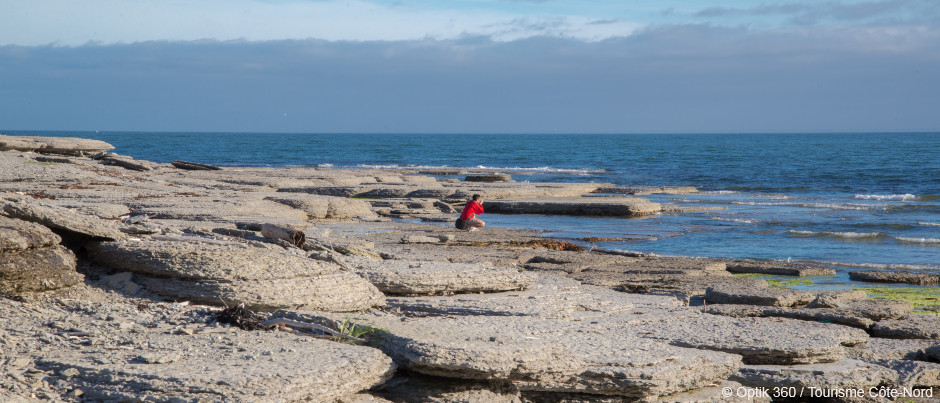
By the way, the road has finally reached the Minganie area! It now stops in Kegaska, much to everyone’s delight. Kilometres of zenitude await you along a picturesque shoreline. Set aside your travel guides and just stop in all the villages along the way, go for a stroll on the long wooden boardwalks by the sea and chat with the locals. Let them tell you the time of the tides, where to find the best fish and seafood, the benefits of drinking Labrador tea and the best ways to savour locally picked cloudberries. They will direct you to the local whale research station, the most beautiful church in the area, the best restaurants, the fishing harbours… If you ask, they will tell you everything. They love visitors!
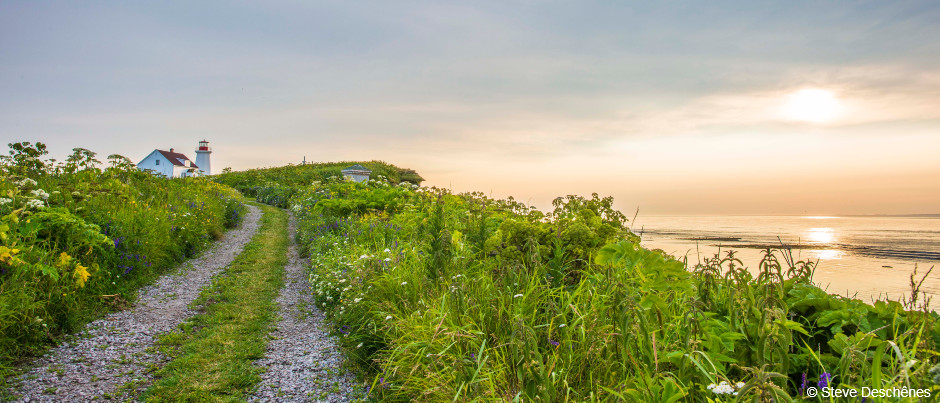
Settle in and get in sync with the rhythm of the sea, learn to identify the local birds and cross your fingers that you’ll get to see a shooting star or, better still, the aurora borealis. Stick with the park reserve’s excellent naturalist guides, who will tell you all about the local wildlife and rare plants. As the saying goes, you’ll learn something new every day! Have a picnic on your favourite island, bring your book with you and don’t forget your binoculars! Happiness can come from the simplest things…
Speaking of happiness, my brother’s girlfriend did finally become my sister-in-law. The happy couple has been living in Havre-Saint-Pierre for nearly 50 years now and has produced their own family of Cayens!
P.S. Apples are now readily available in Minganie as well!
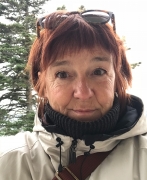
(0) comment